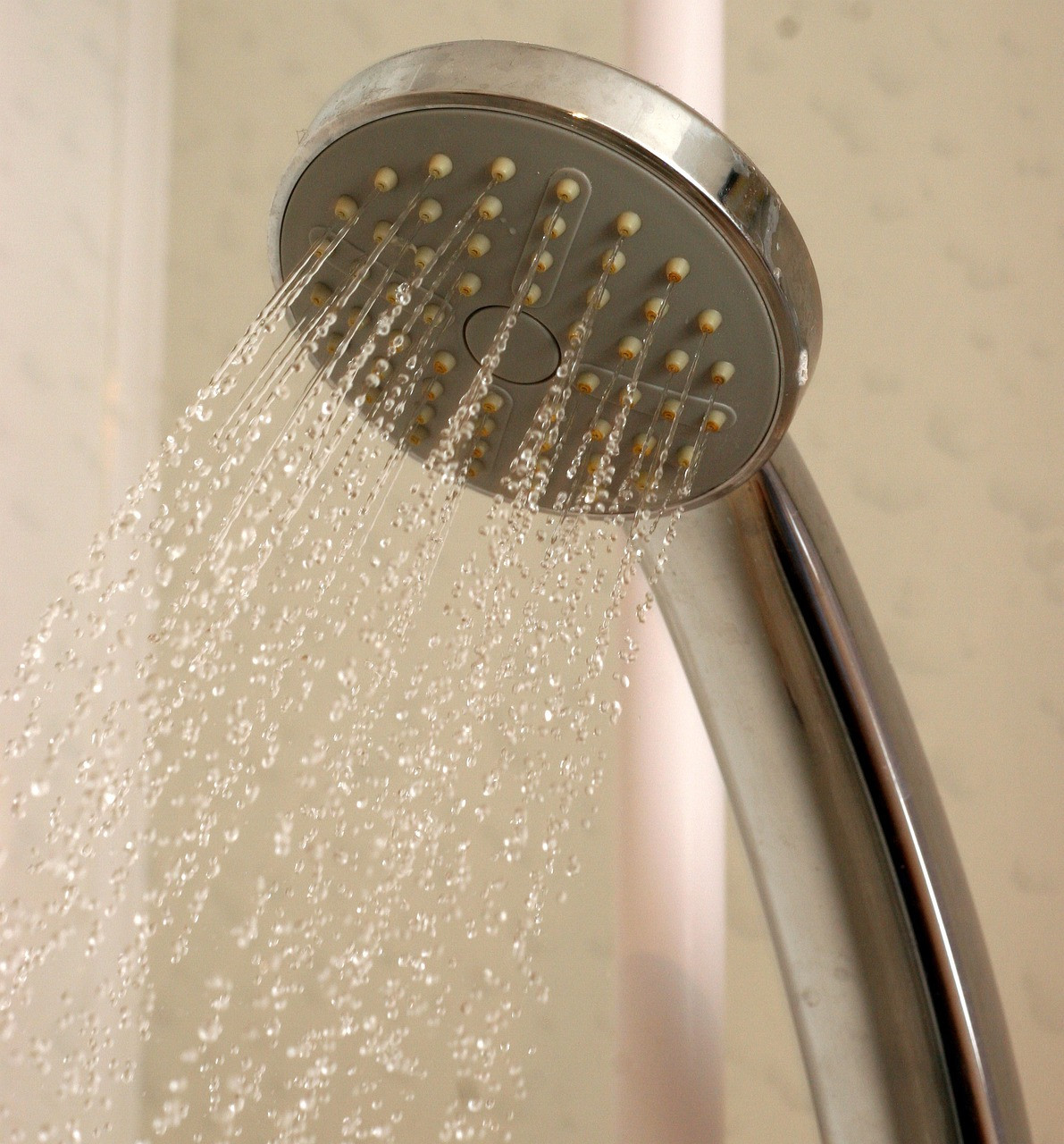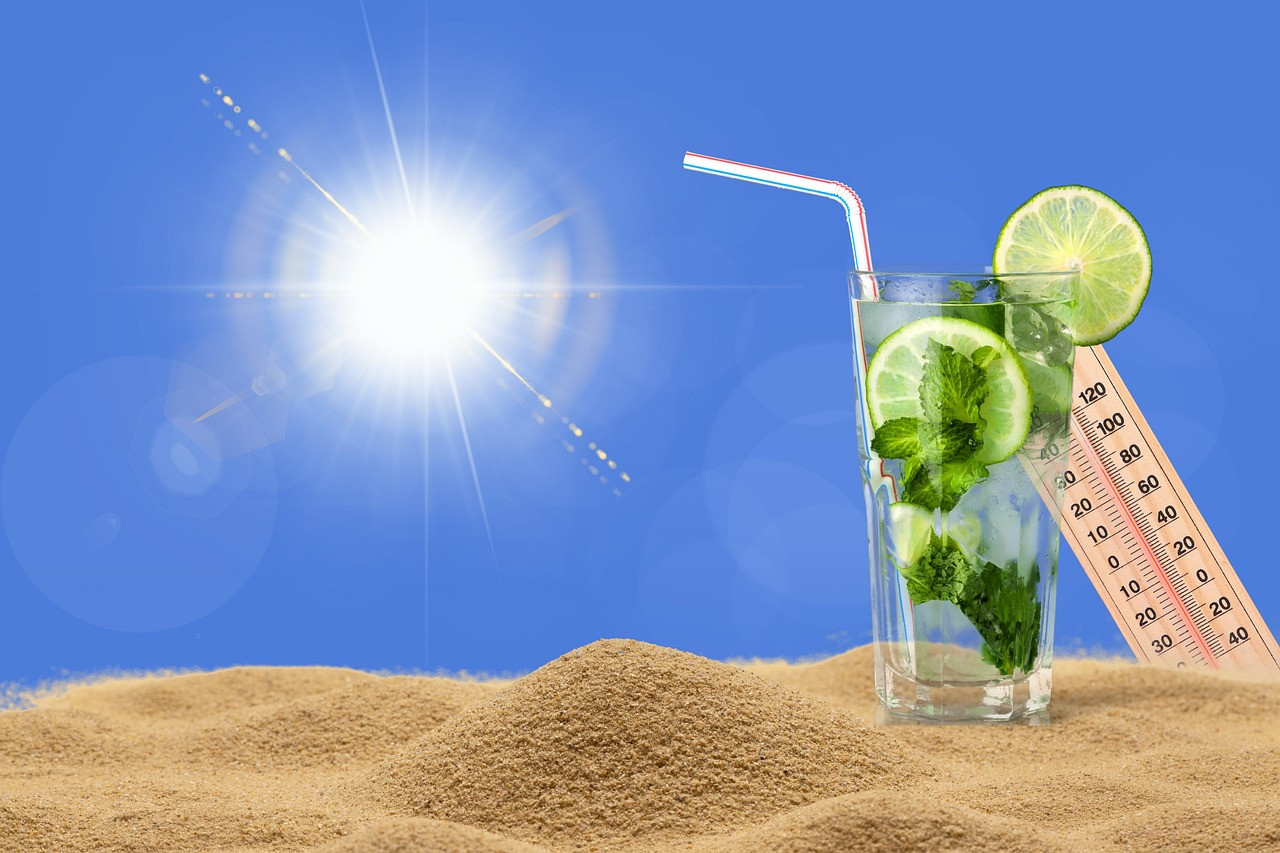Herbal teas are particularly beneficial for the fall season, offering an array of health advantages. Chamomile tea is famous for its calming effects and is often used as a natural sleep aid, making it perfect for unwinding before bed. Ginger tea stands out for its ability to alleviate symptoms of the common cold with its anti-inflammatory and antioxidant properties, providing overall health support.

Shower steamers are an easy, effective way to turn your daily shower into a spa-like experience. These little blocks, packed with essential oils, release relaxing or invigorating scents when exposed to water. You can customize them with your favorite essential oils and enjoy aromatherapy benefits any time you shower. Here’s a simple recipe to make your own DIY shower steamers.
DIY Shower Steamer Recipe
Ingredients
* 1 cup baking soda
* ½ cup citric acid
* ½ cup cornstarch (for binding and structure)
* Essential oils (15-20 drops, customized based on scent preferences)
- Peppermint or eucalyptus for clearing sinuses
* Witch hazel (in a spray bottle)
* Silicone mold (small shapes work best for one-time use)
Directions
1. Combine Dry Ingredients: In a large mixing bowl, combine the baking soda, citric acid, and cornstarch. Mix well to ensure an even distribution of ingredients.
2. Add Essential Oils: Add 15-20 drops of essential oil(s) to the dry mixture, adjusting based on scent preference. Stir thoroughly to distribute the oils evenly.
3. Moisten with Witch Hazel: Lightly spritz the mixture with witch hazel to help it bind. Spray slowly and mix well after each spritz until the mixture holds its shape when squeezed without being overly wet.
4. Mold the Mixture: Pack the mixture firmly into the silicone mold, pressing down to eliminate any air bubbles.
5. Dry Overnight: Allow the shower steamers to dry in the mold overnight or until they’re hard to the touch. Once dry, gently pop them out of the mold.
6. Store in a Sealed Container: Keep the shower steamers in an airtight container to prevent moisture from activating them prematurely.
How to Use Your Shower Steamers
To use, simply place one steamer on the shower floor, close enough to the water stream for it to dissolve slowly but not directly under running water. As the steamer fizzes, it will release the essential oils into the steam, creating a therapeutic experience for you to enjoy.
Creating shower steamers at home is a simple and cost-effective way to add a touch of luxury to your everyday routine. Customize the oils to suit your mood and enjoy the benefits of aromatherapy in your shower!
My blogs contain some affiliate links.
Any purchase made is a blessing to my family at no extra cost to you!
Thank you for supporting us!

Chronic inflammation acts like a silent storm within your body, often remaining unnoticed until it causes significant health problems. Unlike acute inflammation, which resolves quickly, chronic inflammation can linger for months or even years, damaging tissues and organs. Recognizing the signs of chronic inflammation is crucial for maintaining good health and taking preventive measures.
...
If you notice any of these signs, taking immediate action is essential. Evaluate your diet, stress levels, and lifestyle habits, as all play a role in inflammation. Incorporating anti-inflammatory foods, managing stress through techniques like yoga, and consulting a holistic care professional can help you create a tailored plan to combat chronic inflammation and protect your long-term health.

Are you struggling to get your child to sit still and pay attention? It’s a common challenge, especially in today’s fast-paced world. But don't worry, there are natural ways to help improve their concentration and focus. This guide will empower holistic moms and families dedicated to wellness with practical tips and strategies to enhance their child's ability to concentrate. By the end of this post, you'll have a toolbox of solutions that promote a balanced and healthy lifestyle.
The Importance of a Balanced Diet and Proper Hydration
Nutrition
What your child eats plays a significant role in their ability to focus. A diet rich in whole foods provides the essential nutrients their brain needs to function optimally.
- Fruits and Vegetables: These are packed with vitamins and minerals crucial for cognitive function. Leafy greens like spinach and kale are particularly beneficial.
- Whole Grains: Foods like oatmeal and quinoa offer a steady release of energy, helping to maintain focus throughout the day.
- Protein: Beans and nuts are excellent sources of protein, which is vital for brain health and neurotransmitter function.
- Healthy Fats: Found in fish, avocados, and nuts, these fats support brain development and function.
Hydration
Even mild dehydration can impact your child’s concentration. Ensure your child drinks plenty of water throughout the day. A general guideline is eight 8-ounce glasses of water daily, but this can vary based on activity level and climate.
- Ensure they have their favorite water bottle ready to go when you are going out.
- Make drinking fun with fruit and vegetable infused water.
- Encourage drinking water instead of sugar-filled drinks, or artificially flavored or colored drinks.
The Power of Regular Physical Activity
Exercise
Incorporating regular physical activity into your child's routine can significantly boost their focus and overall brain function.
- Aerobic Activities: Activities like running, swimming, and cycling not only improve physical health but also enhance cognitive function.
- Team Sports: Engaging in sports like soccer or basketball helps develop social skills and encourages teamwork, which can further aid concentration.
- Yoga and Mindfulness: These practices teach children how to focus and relax, providing lifelong tools for managing stress and maintaining concentration.
Encouraging Play
Ensure your child gets at least an hour of physical activity daily. This can be a mix of structured activities like sports and unstructured play, which is just as important for their development. Sitting for TV or video games should not exceed a 1/2 hour to an hour depending on age before encouraging them to get up and move again.
The Benefits of a Structured Routine and Breaks
Consistent Schedule
Children thrive on routine. A predictable daily schedule helps them know what to expect and when to focus on specific tasks.
- Morning Routine: Start the day with a healthy breakfast and some light physical activity to wake up their bodies and minds.
- Homework Time: Set a consistent time each day for schoolwork, so your child knows when it's time to concentrate.
- Bedtime Ritual: A calming bedtime routine ensures they get enough sleep, which is essential for focus and overall health.
Breaks
Short, frequent breaks help prevent burnout and maintain high levels of focus. The Pomodoro Technique, which involves 25 minutes of focused work followed by a 5-minute break, can be adapted for children. This method keeps their mind fresh and engaged.
How to Minimize Distractions
Environment
Creating a distraction-free environment is crucial for helping your child concentrate.
- Quiet Space: Designate a quiet area for homework and focused activities. Ensure it is well-lit and comfortable.
- Limited Screen Time: Reduce exposure to screens during homework time. Encourage screen-free periods to minimize distractions from phones, TVs, and tablets.
- Organized Space: Keep their study area tidy and free of clutter. An organized space promotes a clear mind.
Creating a Focus-Friendly Zone
Designate a specific area in your home for focused activities. This can be a corner of a room with a desk and necessary supplies, free from distractions.
The Role of Mindfulness and Relaxation Techniques
Mindfulness Activities
Teaching your child mindfulness can significantly enhance their focus and reduce stress.
- Breathing Exercises: Simple breathing exercises can help calm their minds and improve concentration. Try deep breathing before starting homework.
- Mindfulness Games: Engage your child in games that require focus, such as puzzles or memory games. These activities enhance their attention span in a fun way.
- Guided Imagery: Visualization techniques where children imagine peaceful and focused scenarios can help improve their concentration.
Family Relaxation Time
Introduce simple mindfulness practices that can be done together as a family, such as prayer and deep breathing exercises before bedtime. This not only benefits your child but also strengthens family bonds.
Incorporating Essential Oils for Enhanced Focus
Benefits of Essential Oils
Essential oils can be a great addition to your focus-enhancing toolkit. Certain oils are known for their calming and concentration-boosting properties.
- Lavender: Known for its calming effects, lavender oil can help reduce anxiety and stress, promoting a more focused mind.
- Peppermint: This invigorating oil can enhance alertness and concentration. Diffusing peppermint oil while your child studies can help maintain their focus.
- Rosemary: Often used to improve memory and cognitive performance, rosemary oil can be a helpful tool in your child’s study routine.
- Cedarwood: This is known to promote relaxation and mental alertness: think of Solomon and the Cedars of Lebanon that enhanced his wisdom.
Using Essential Oils
Diffuse these oils in your home, particularly in areas where your child spends time studying. You can also consider using a personal inhaler or applying diluted oils to their wrists or neck.
Implementing These Strategies
Nutrient-Dense Snacks
Offer snacks like fruits, nuts, and yogurt throughout the day to maintain steady energy levels. These nutrient-rich foods keep your child's brain fueled and focused.
Encouraging Physical Play
Ensure children get at least an hour of physical activity each day, with a mix of structured and unstructured play. This not only benefits their physical health but also enhances their ability to concentrate.
Establishing Routines
Develop a consistent daily schedule that includes regular study times, meals, and bedtimes. A structured routine helps your child know what to expect and when to focus.
Designing a Study Area
Create a dedicated, quiet space for homework and other focused activities. Ensure it is well-organized and free of distractions to promote a clear mind.
Teaching Relaxation Techniques
Introduce simple mindfulness practices that can be done together as a family, such as deep breathing exercises before bedtime. This not only benefits your child’s focus but also strengthens family bonds.
Incorporating Essential Oils
Diffuse essential oils for a calming, refreshing atmosphere. Or create the DIY recipe for a roller-ball below.
You can do it!
Helping your child improve their focus requires a combination of lifestyle adjustments, environmental changes, and specific activities. By implementing a balanced diet, regular physical activity, a structured routine, a distraction-free environment, and mindfulness practices, you can create a supportive atmosphere that enhances your child's ability to concentrate.
Remember, these strategies are not just about improving focus but also about fostering a healthy and balanced lifestyle. If you’re looking for more personalized advice, consider booking a consultation with one of our family wellness experts. They can provide tailored recommendations to help your child thrive.
Focus Blend
Keep your kids calm and focused during quiet time or study sessions with this soothing essential oil blend.
FOCUS Ingredients:
- 5 drops lavender essential oil
- 5 drops cedarwood essential oil
- 5 drops orange essential oil
- 2 drops vetiver essential oil
- 2 drops frankincense essential oil
- 2 drops peppermint essential oil
Instructions:
1. Add the essential oils to your diffuser with water as recommended by the manufacturer and diffuse in the room where your kids are spending quiet time.
2. Add the essential oils to a roller bottle and top up with a carrier oil like fractionated coconut oil. Apply to wrists or the back of the neck for a calming effect.
My blogs contain some affiliate links.
Any purchase made is a blessing to my family at no extra cost to you!
Thank you for supporting us!


As we dive into the height of summer, it's essential to find ways to keep cool and comfortable. It will be over 100 all week where I live - over 110 several days - totally crazy heat just in time for everyone to be outside for 4th of July celebrations! Be sure to keep your family, pets, and gardens well hydrated and cared for. This week, I'm sharing natural tips to help your family beat the heat and enjoy the sunny days ahead. See below for signs of heat exhaustion and heat stroke and what to do when it happens.
🌟 Tips to Beat the Heat and Prevent Heat-Related Illness:
1. Stay Hydrated
Drink plenty of water throughout the day, even if you're not thirsty. When it's hot, drink more than half your body weight in ounces. Enhance it with slices of cucumber, lemon, or fresh berries for added flavor and nutrients.
Get electrolytes in your system. When you sweat, you lose electrolytes and water—these must be replaced! Try coconut water, sea salt, Ningxia Red, or Vitality Drops in your water.
-Avoid alcohol, sodas, and caffeinated drinks as they can dehydrate you.
2. Eat Cooling Foods:
- Incorporate hydrating and cooling foods into your meals. Cucumbers, watermelon, and leafy greens are perfect summer staples.
- Make chilled soups or smoothies to keep meals light and refreshing.
3. Natural Cooling Remedies:
- Keep a spray bottle filled with water, witch hazel, and a few drops of peppermint essential oil in the fridge. Spritz on your face and neck for instant refreshment. (Carefully avoid eyes)
- Use aloe vera gel, or Lavaderm after sun spray from the fridge to soothe and cool sun-exposed skin.
4. Create Shade:
- Encourage indoor activities during the peak heat hours from 10 AM to 4 PM.
5. Dress Smart:
- Opt for light-colored, loose-fitting clothing made from natural fabrics like cotton or linen.
- Hats and sunglasses are essential for protecting from the sun.
6. Take Breaks in Cool Areas:
-Regularly move to shaded or air-conditioned areas to cool down.
-Protect your skin from sunburn, which can affect the body’s ability to cool down.
8. Limit Outdoor Activities:
-Schedule strenuous activities for cooler parts of the day, like early morning or late evening.
9. Know Your Risk:
-Certain individuals, such as young children, older adults, those taking certain medications, and those with chronic illnesses, are more susceptible to heat-related illnesses and should take extra precautions.
10. Never Leave Children or Pets in Cars:
-Cars can heat up rapidly, even with the windows slightly open, leading to dangerous conditions quickly.
11. Acclimatize to the Heat:
-Over time, gradually increase the time spent in the heat to allow your body to adjust.
Understanding the signs of heat exhaustion and heat stroke is crucial, especially during the summer months when outdoor activities are frequent. Here’s a detailed guide to help identify and respond to these heat-related conditions.
🌞 Signs of Heat Exhaustion
Heat exhaustion occurs when the body overheats and cannot cool down effectively, often due to prolonged exposure to high temperatures and insufficient fluid intake. It's a condition that can lead to heat stroke if not addressed promptly.
Key Signs and Symptoms:
1. Heavy Sweating: Profuse sweating is a primary symptom as the body tries to cool itself down.
2. Cool, Clammy Skin: The skin may feel cool and moist to the touch despite the heat.
3. Paleness: The skin may appear pale.
4. Muscle Cramps: Painful cramps can occur, especially in the legs or abdomen.
5. Fatigue: A feeling of extreme tiredness or weakness is common.
6. Dizziness: Lightheadedness or a feeling of faintness may be present.
7. Headache: Often, heat exhaustion is accompanied by a throbbing headache.
8. Nausea or Vomiting: Feeling sick to the stomach or vomiting can occur.
9. Fainting: In severe cases, fainting may happen due to reduced blood flow to the brain.
10. Rapid Heartbeat: The pulse may become fast and weak.
Immediate Actions:
- Move to a cooler place (shade or indoors).
- Loosen clothing.
- Drink plenty of fluids, preferably water with electrolytes or sports drinks.
- Apply cool, wet cloths to the skin or take a cool bath.
- Elevate the legs slightly to improve blood circulation.
- Rest and avoid physical activity.
🔥 Signs of Heat Stroke
Heat stroke is a severe, life-threatening condition where the body's temperature regulation system fails, causing the body temperature to rise to dangerous levels quickly. It requires immediate medical attention.
Key Signs and Symptoms:
1. High Body Temperature: Core body temperature of 103°F (39.4°C) or higher.
2. Hot, Dry Skin: Skin may feel hot and dry due to a cessation of sweating, although sweating may still occur in some cases.
3. Red, Flushed Skin: The skin may turn red as body temperature increases.
4. Rapid, Strong Pulse: The heart rate may become very fast and strong.
5. Throbbing Headache: A severe headache is often present.
6. Dizziness or Confusion: Mental state changes, including dizziness, confusion, agitation, or even loss of consciousness.
7. Nausea or Vomiting: Severe stomach upset or vomiting.
8. Seizures: In extreme cases, heat stroke can cause seizures.
9. Altered Mental State: Delirium, slurred speech, or coma may occur.
Immediate Actions:
- Call 911 or seek emergency medical assistance immediately.
- Move the person to a cooler environment (shade or air-conditioned area).
- Try to cool the person rapidly using whatever methods available:
- Immerse in a cool bath or shower.
- Spray with cool water from a hose or misting bottle.
- Apply ice packs to armpits, groin, neck, and back.
- Fan while misting with cool water.
- Do not give fluids if the person is unconscious or not fully alert.
- Continue cooling efforts until emergency medical help arrives.
Recognizing and acting on the signs of heat exhaustion and heat stroke can save lives. Always take preventive measures and respond promptly if symptoms arise to ensure your safety and that of your loved ones during hot weather.
My blogs contain some affiliate links.
Any purchase made is a blessing to my family at no extra cost to you!
Thank you for supporting us!



